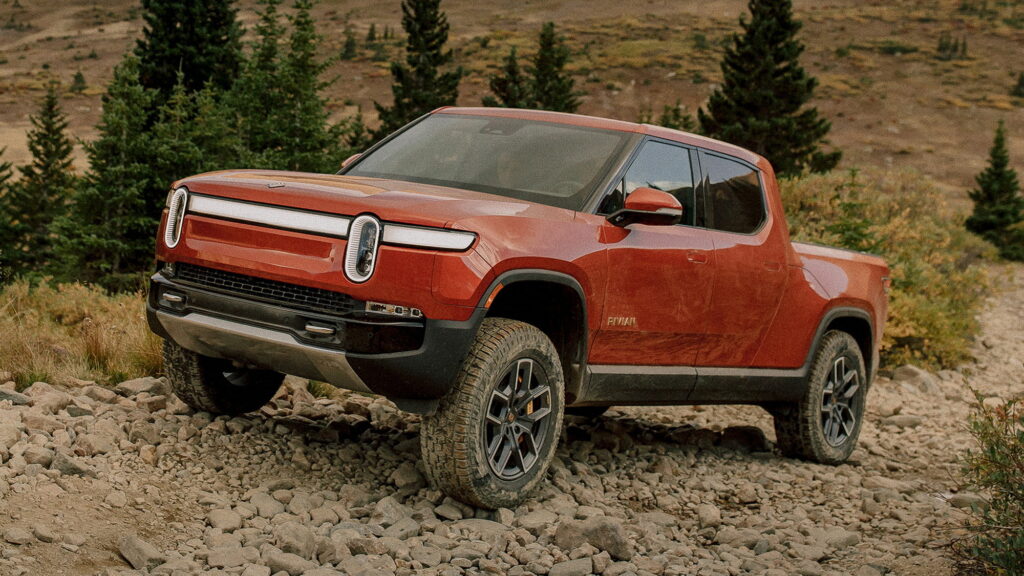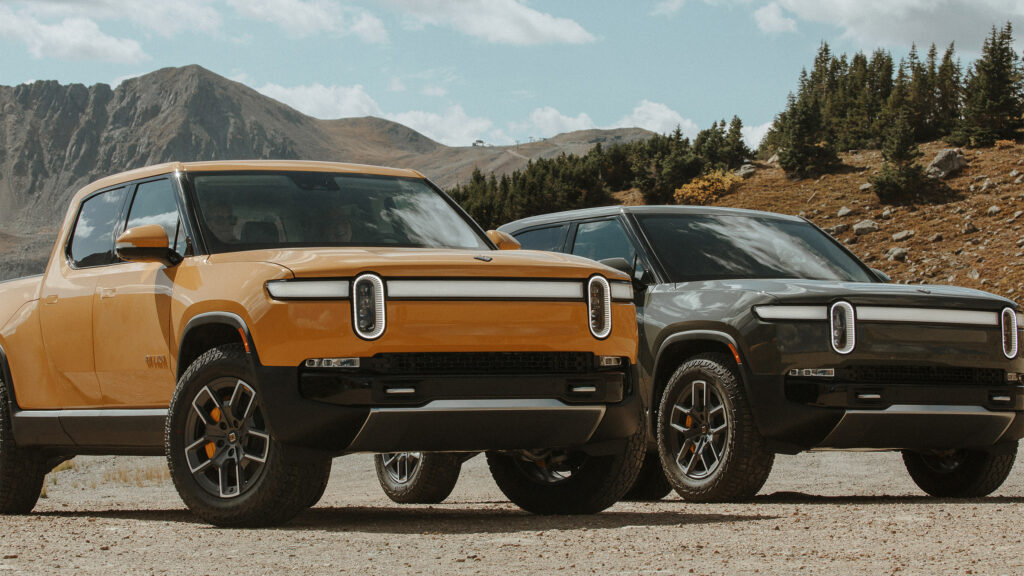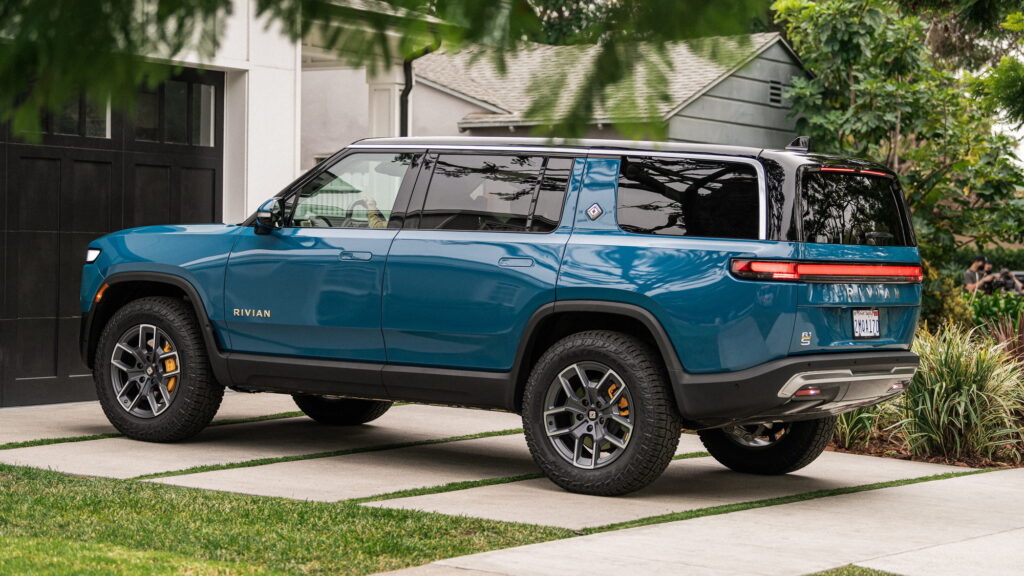In addition to the Rivian’s weight, some of the features in its range-increasing Conserve mode are leading to premature tire wear.
August 15, 2023 at 12:01
 –>
–> 
–>
By now, Rivian’s vehicles have developed somewhat of a reputation for wearing out their tires extremely quickly. According to The Drive, some owners have reported their tires were wearing out after as little as 6,000 miles (9,656 km), while less extreme reports detail replacement after around 12,000 miles (19,312 km). Either way, these figures are extremely poor given the average tire can last around 60,000 miles (96,560 km).
After further investigation by some of these owners, it was found the issue lies in the vehicle’s “Conserve” mode. which disengages the two rear motors to save battery. This feature effectively takes the truck from all-wheel drive to front-wheel drive. You might think this shouldn’t be an issue given how many front-wheel drive vehicles exist that don’t need their tires replaced every 6,000 miles, but there are a few important factors at play: power and weight.
Read More: Rivian Gently Increases 2023 Production Goal As Recent Moves Begin To Pay Off
advertisement scroll to continue

Touching on the first one, even with the Rivian’s rear motors disengaged, it could still make around 418 hp (424 PS / 312 kW), which is all sent to the front wheels. That’s a lot of power for the wheels responsible for steering, braking, and accelerating. Take the previous-gen Honda Civic Type R for example, which was one of the most powerful FWD cars you could buy at the time. That car made 112 hp (114 PS / 84 kW) less than the Rivian in Conserve mode, and even still, Motor Trend reported it chewed through a set of tires in less than 9,000 miles (14,484 km).
Now imagine that same scenario but with those 112 extra ponies and two tons of extra mass, and you arrive at our second point: the Rivian‘s curb weight. The more a vehicle weighs, the more force it exerts on the tires to wear them down, and it doesn’t take a rocket scientist to figure out that a 3.5-ton truck will exert a lot of force on a set of tires.
See Also: Rivian’s New R1T Dual Motor Performance Might Be A Bit Too Good

But it’s not just that. Owners are reporting that in addition to the motor decoupling, the Conserve mode’s ride height adjustment has also proved to play a role in this extreme tire wear. When in the efficiency-focused drive mode, the ride height of the vehicle drops to reduce frontal area and improve aerodynamics. However, it was also found to negatively impact the alignment, particularly with regard to its toe angle. Too much toe angle causes the tires to unnecessarily scrub more as the car drives down the road, further contributing to premature wear.
Rivian is reportedly even aware of the issue, with one owner claiming the company advised them to rotate tires more frequently if they use Conserve mode often. Thankfully, Pirelli covers Rivian’s OE rubber for up to 50,000 miles (80,467 km), but that’s beside the point, as even with this coverage, owners simply shouldn’t have to deal with the issue of such frequent tire replacement.

